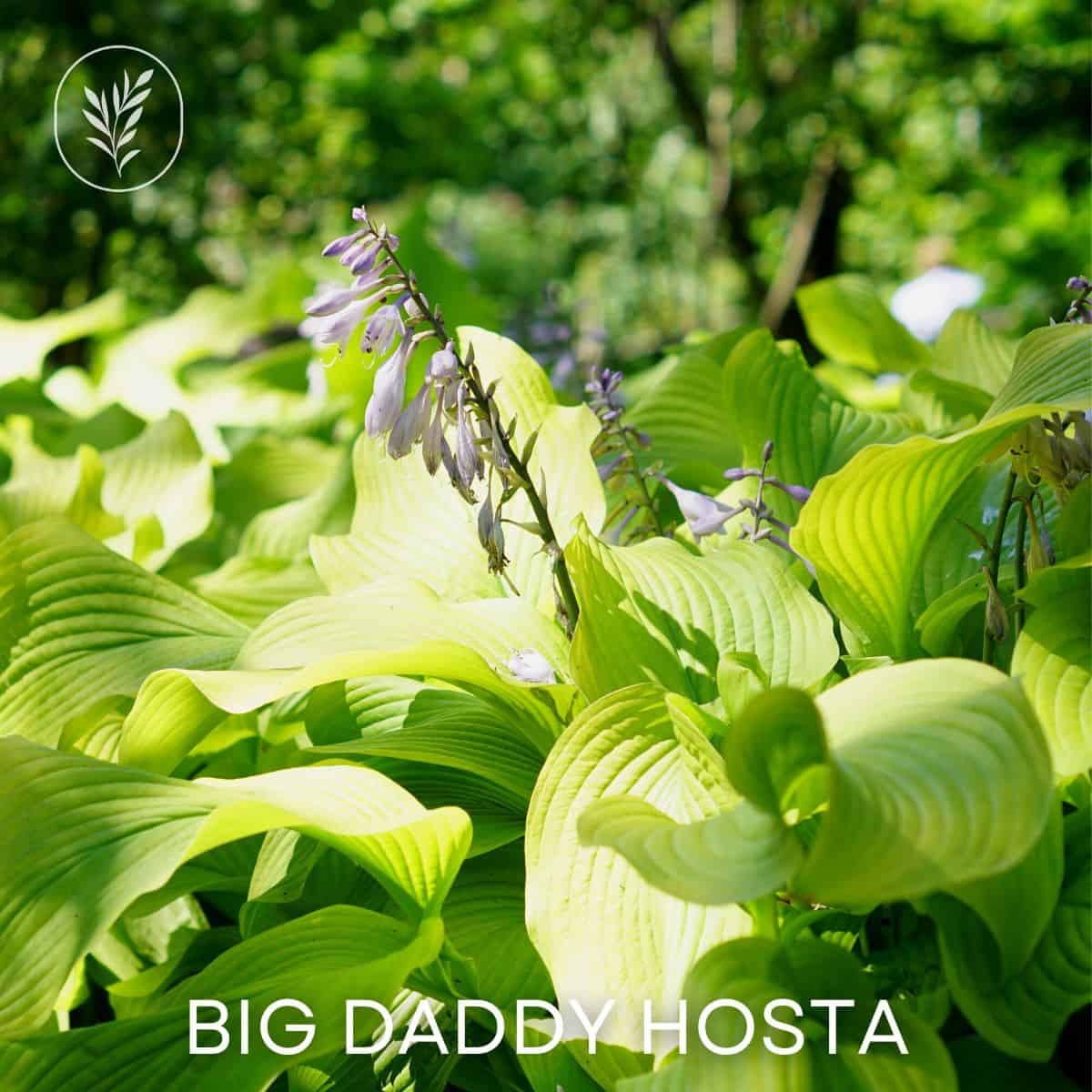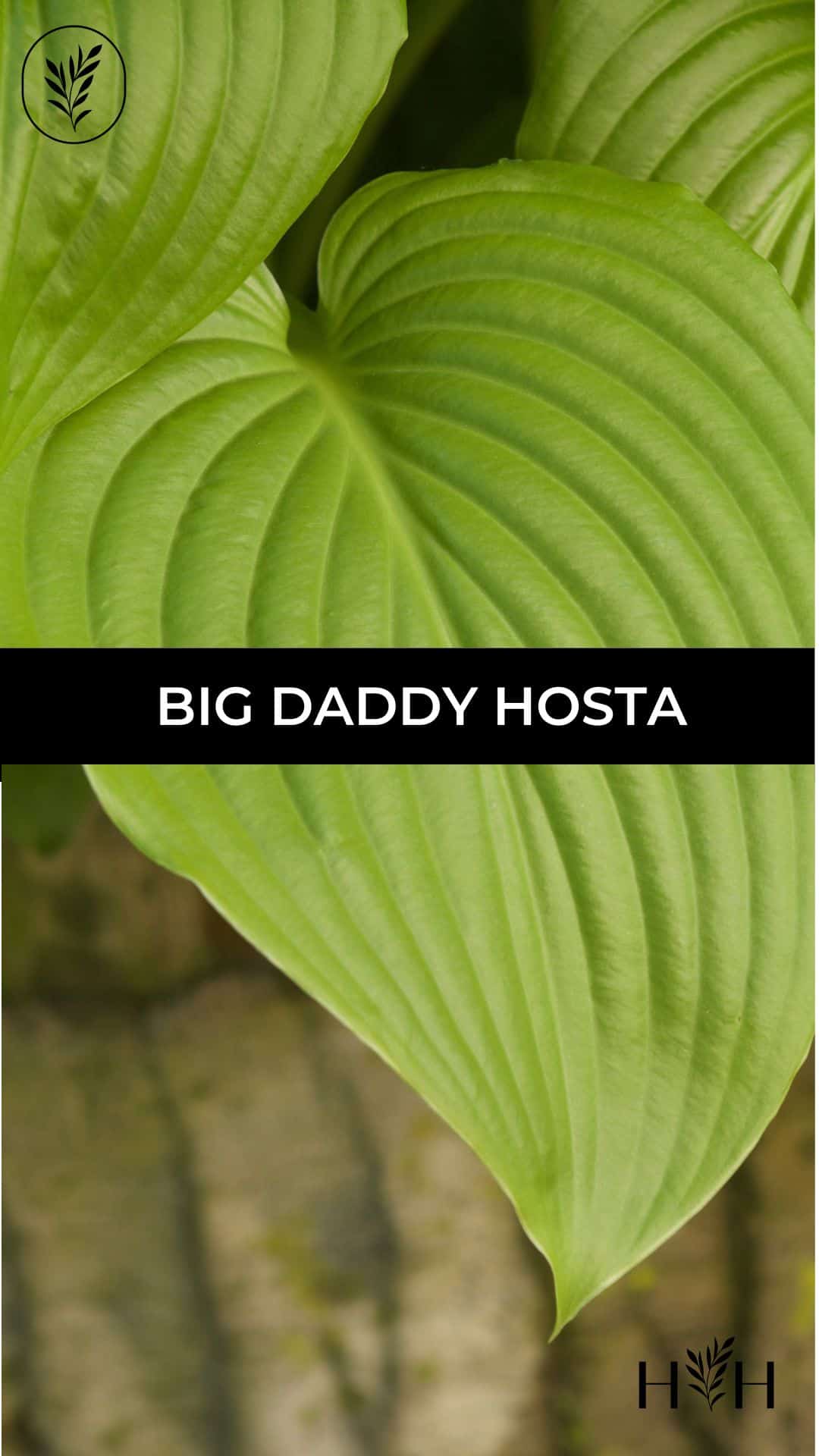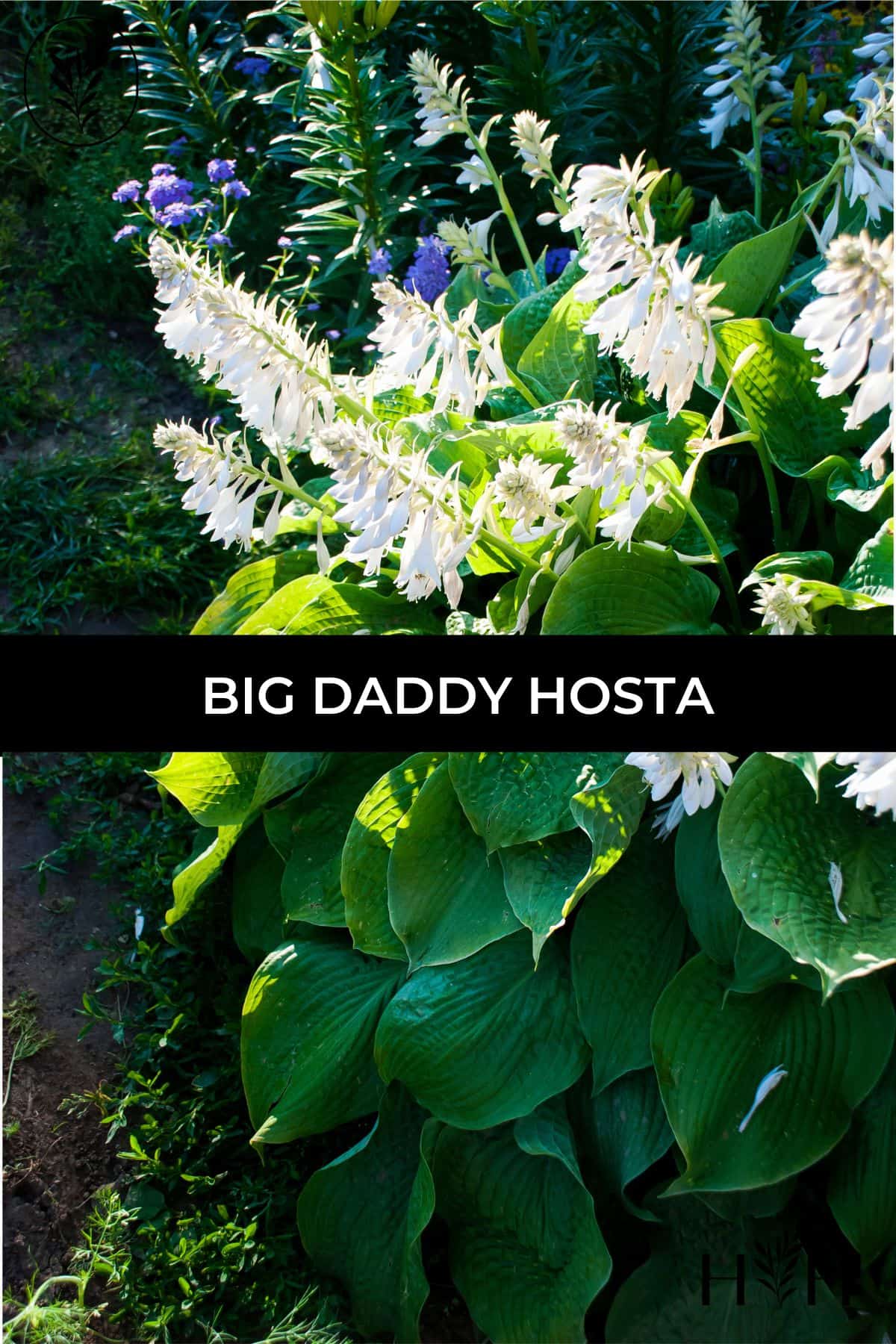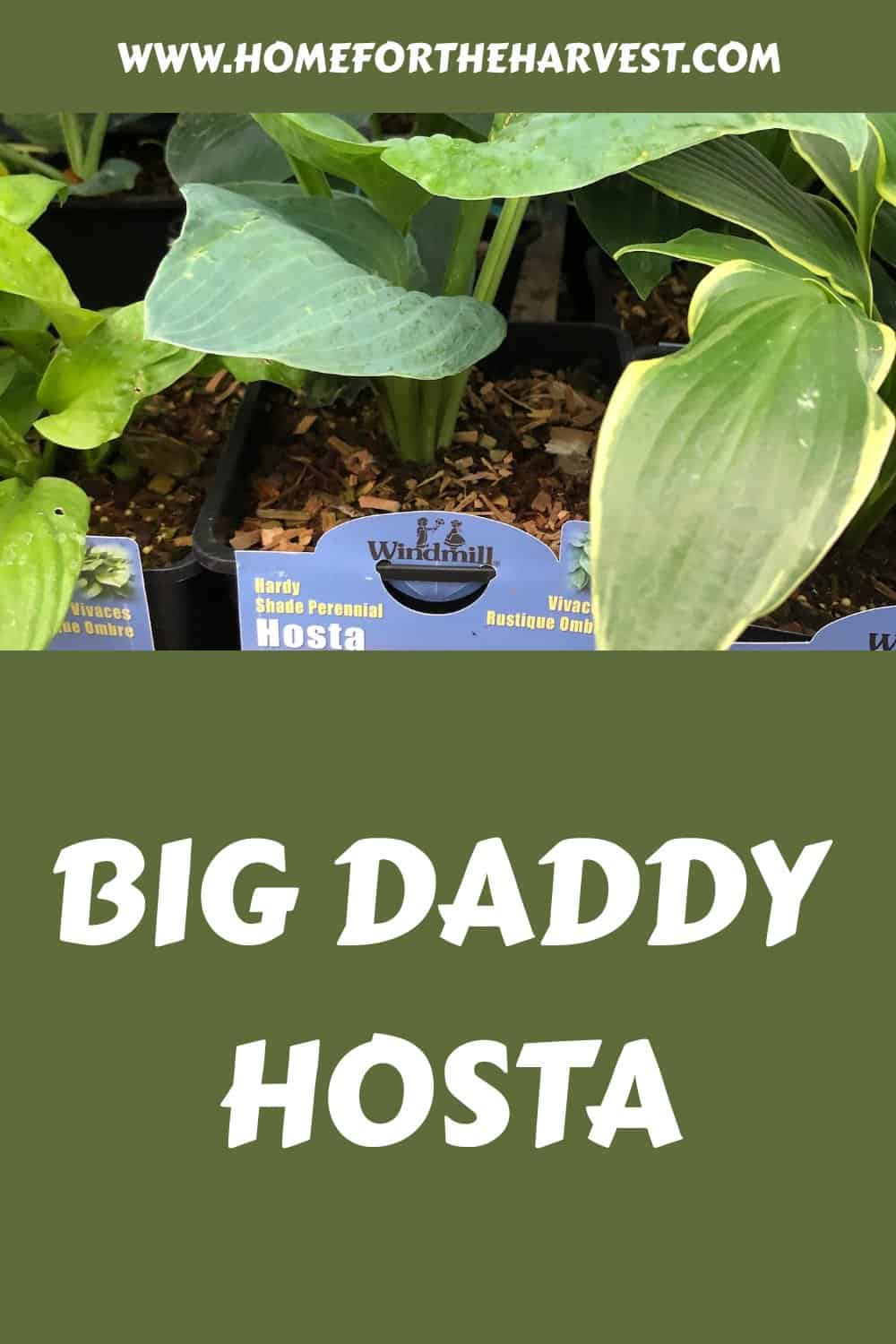Big Daddy hosta is a large-sized variety with matte blue cupped leaves. The thick leaves have a puckered texture, making this plant a feature in the shade garden. Big Daddy hostas can be slow-growing, especially in clay soil, but are generally easy to grow and perfect for bringing some textural interest to shady corners.
Big Daddy hosta basics
The Big Daddy hosta is a large and impressive specialty variety with uniquely cupped leaves. The surface of these leaves is covered with a puckered texture (almost like seersucker fabric). The Big Daddy hosta’s leaves are also beautiful blue-green, making it stand out in any garden setting.
Big Daddy hostas grow to be about 4 feet wide and 2 feet tall when the plants are well-established. They have lovely pale purple funnel-shaped flowers that bloom right about the mass of leaves. Each leaf is about 1 foot long and wide, with cupping about 2 inches deep.
Big Daddy hosta can be grown in zones 3-9. This plant is perfect for adding some texture and interest to shady areas of the garden, as it does not require much sunlight to thrive. Big Daddy hostas are also relatively easy to care for, although they can be slow-growing. Their thick textured leaves make this variety a naturally slug-resistant hosta!
The big daddy hosta was bred by Florence Shaw of Weston, Massachusetts (source: American Hosta Society). Mrs. Shaw was an important amateur hosta hybridized in the 1960s and 1970s who is also known for breeding the wildly-popular Sum and Substance hosta and Blue Angel hosta, as well as for mentoring hosta breeder Kevin Vaughn. The variety was registered with the American Hosta Society by Paul Aden in 1978.
Where to plant a Big Daddy hosta
The best place to plant Big Daddy hosta is a shady spot in zones 3-9 with well-drained, slightly acidic soil. That said, this variety is clay-tolerant (just be ready to wait an extra few years for the plant to grow to mature size). You can fill the edges of the mature footprint with annuals while you wait for the hosta to come up to size.
When to plant Big Daddy hosta
The best time to plant a hosta is in the spring after all danger of frost has passed. You can also successfully plant hostas in the fall without much extra work. Hostas can be planted in the summer but must be watered very frequently to help the roots become established. Read more about when to plant hostas.
How to plant Big Daddy hosta
Planting hostas in the ground correctly will give them the best chance for success:
- Choose a shady spot in your garden with well-drained, slightly acidic soil. If you have clay soil, make sure to amend the soil with organic matter before planting. This hosta can grow up to 4 feet wide, so you may wish to amend the soil in this entire footprint if it is pretty poor.
- Dig a hole that is twice as wide as the root ball of your plant.
- Gently remove the hosta from its pot and loosen any tangled roots.
- Place the plant in the hole so that the crown (where the leaves meet the roots) is level with the soil surface.
- Backfill the hole with amended soil, being careful not to bury the crown of the plant.
- Water well to help settle the roots into their new home.
Read more about how to plant hostas.
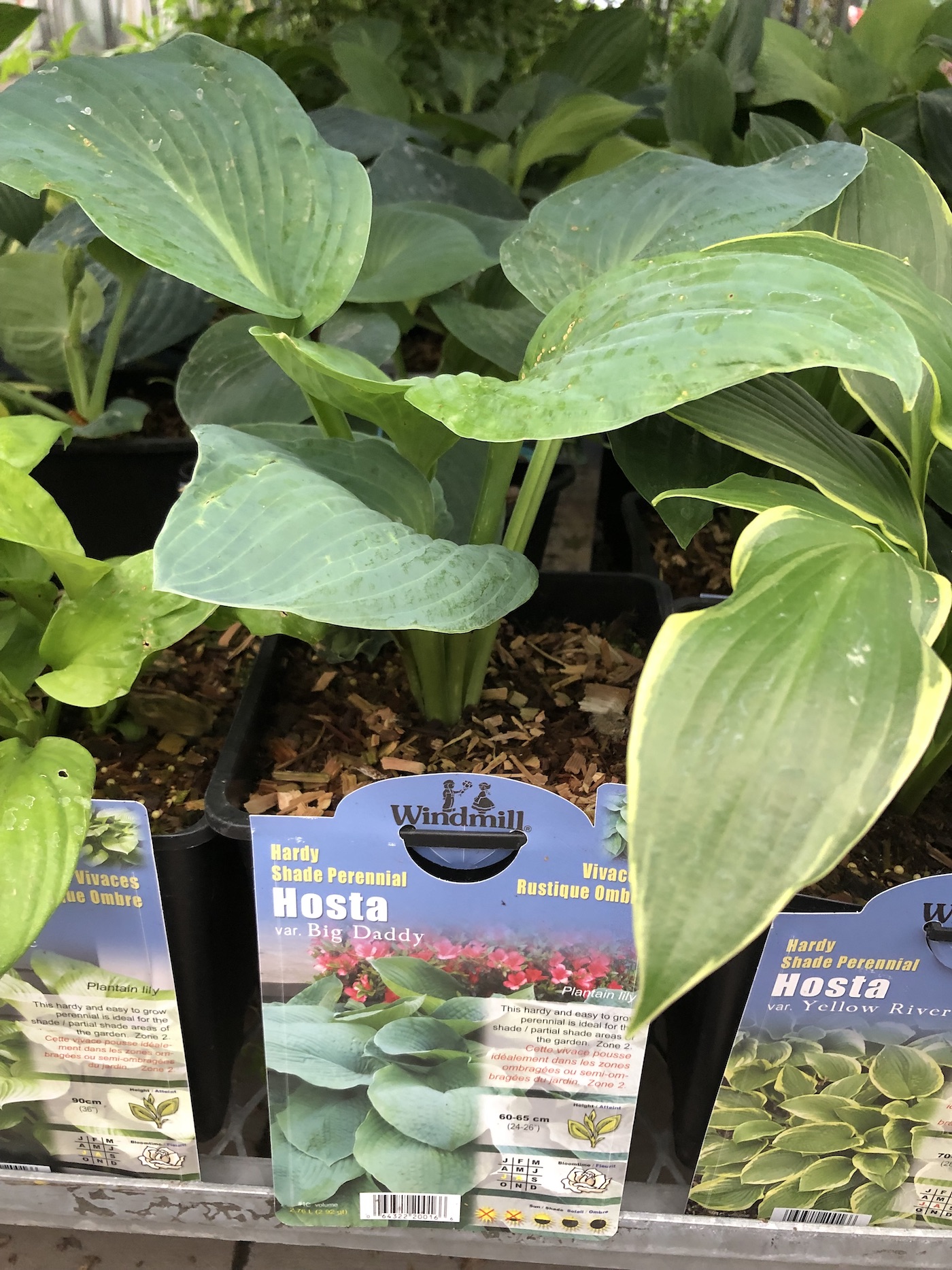
How to care for a Big Daddy hosta
Big Daddy hostas are generally easy to care for once they are planted. They will need to be watered regularly during the first growing season to help establish a deep, extensive root system. After that, hostas are relatively drought-tolerant and only need supplemental watering during periods of extended drought.
Big Daddy hostas will also benefit from a yearly application of compost or other organic matter on the soil surface. This will help keep the soil around the plants loose and fertile. You can top the compost with a layer of organic mulch like bark mulch.
Watering tips
Big Daddy hosta plants are giant plants with big leaves full of lots of water. To keep them happy, you’ll likely have to water multiple times per week at first (unless its rainy out). Water big daddy hosta plants regularly during the first growing season to help establish a deep, extensive root system.
After the first year or two, hostas are relatively drought-tolerant and only need supplemental watering during periods of extended drought. Water frequently if the soil dries out often as hostas grow naturally in a very rainy climate.
Fertilizing Big Daddy hosta plants
Hosta plants will benefit from a yearly application of compost or other organic matter. This will help keep the soil around the plants loose and fertile and provide a slow source of natural nutrients.
You can also fertilize hosta plants in the spring with a slow-release organic fertilizer. This is especially important in sandy soils, which may be nutrient-poor as the water washes minerals out of the soil.
Pruning hostas
There is no need to prune Big Daddy hostas unless you want to shape them or remove damaged leaves. To remove damaged leaves, simply snap or trim them off at the base of the plant. The entire plant can be cut back in the fall after the first hard frost.
Plant care tips for Big Daddy hosta
When mulching big daddy hosta plants, be sure to use an organic mulch such as shredded leaves, bark, or compost. This will help keep the soil around the plants moist and cool during the summer months.
Weeding is important when caring for big daddy hosta plants, as weed competition will rob the plants of moisture and nutrients. Be sure to remove any weeds that you find in the area around the plants. A good organic mulch will also help keep weeds down.
Companion plants for larger hosta
Some good companion plants for large hostas include ferns, astilbes, and bleeding hearts. These plants will help to create a shady, woodland-like garden habitat that big daddy hostas love.
Pests affecting hostas
Garden pests that can affect big daddy hosta plants include aphids, slugs and snails, and Japanese beetles. These pests can damage the leaves of the plant, making them look unsightly. If you see any of these pests on your big daddy hostas, take steps to get rid of them immediately.
Diseases affecting hostas
Plant diseases like petiole rot, Hosta Virus X, and foliar nematodes can affect hostas. These diseases can cause the leaves of the plant to become discolored or spotted, and in severe cases, can kill the plant. If you see any signs of these diseases on your big daddy hostas, be sure to contact the local state gardening extension office for help.


